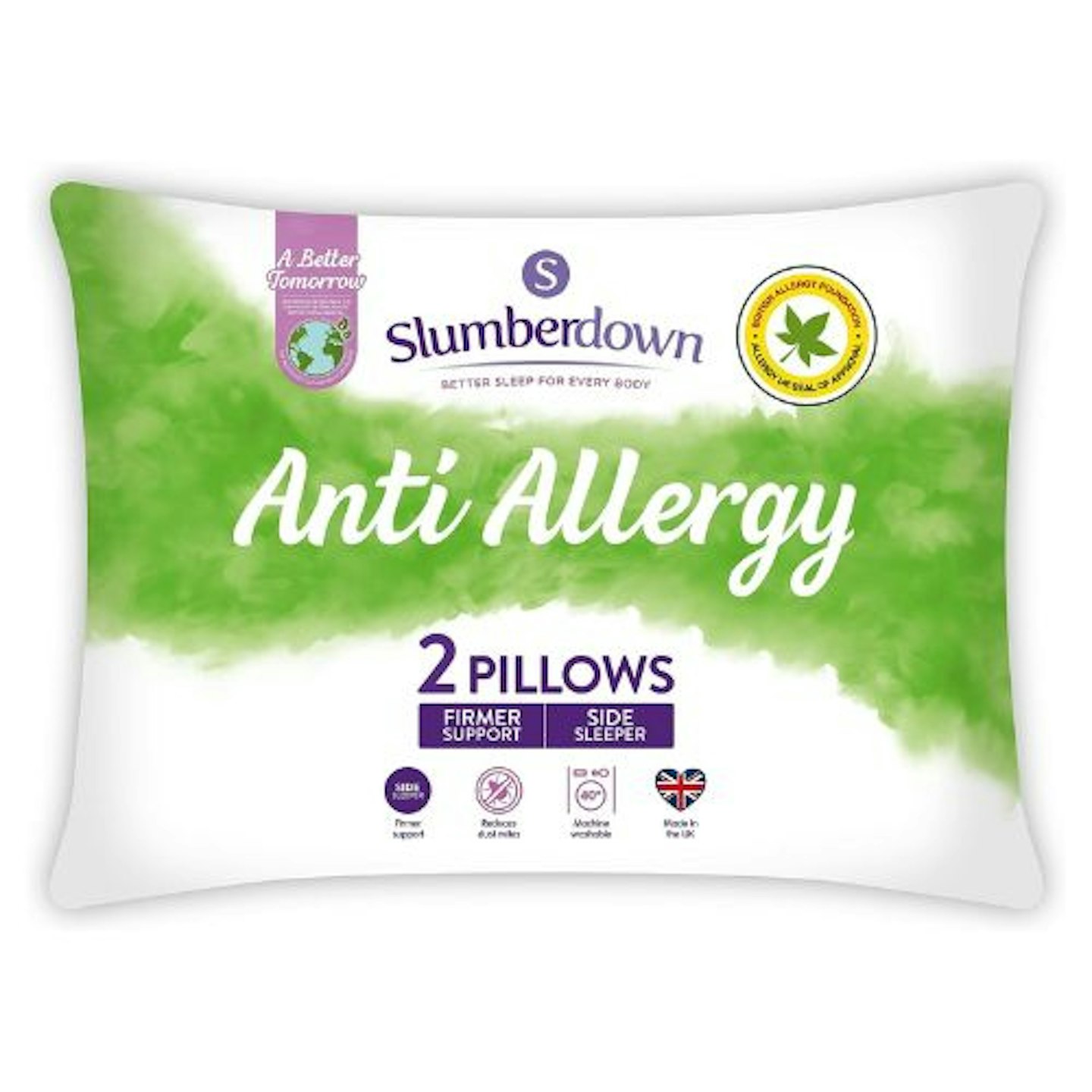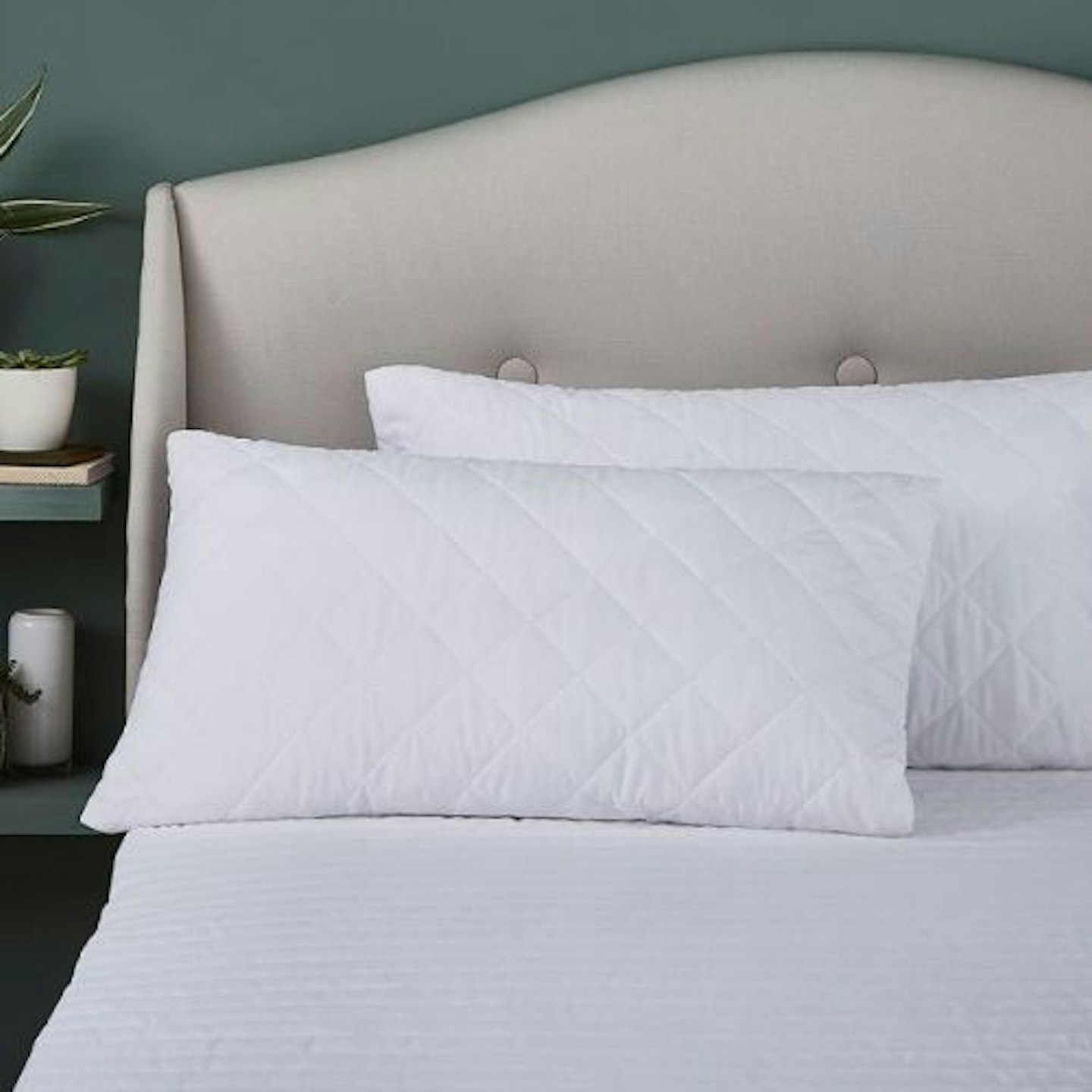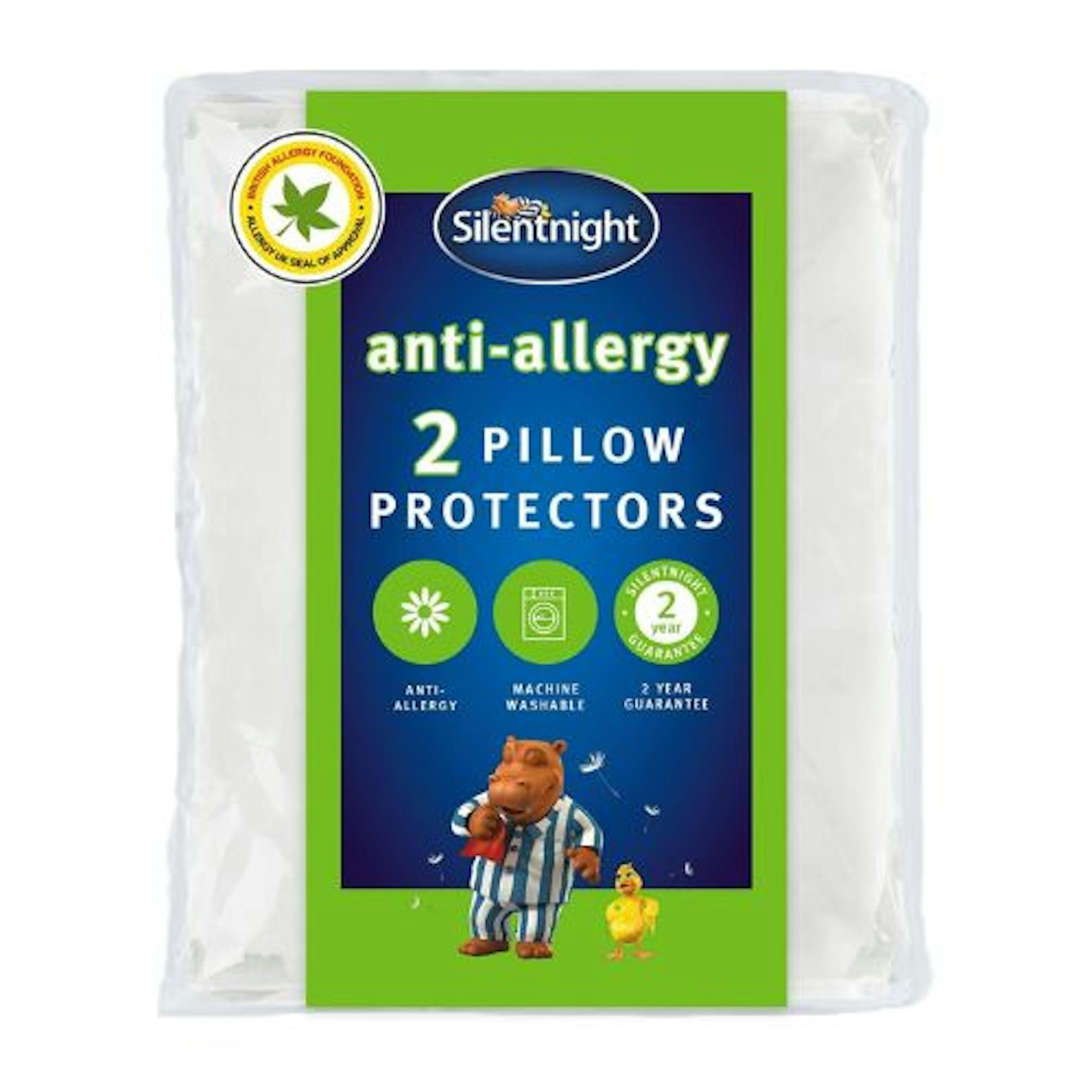With the best anti-allergy pillows, hypoallergenic has never felt so comfortable. For those of us who suffer from a sniffle and sensitive skin, choosing the correct pillow can be beneficial to our bedtime. As for allergies, they can disrupt sleep, says Director of Buying at Dreams, Fabio Perrotta. So, an anti-allergy alternative may help improve sleep quality by lessening symptoms, which can manifest as congestion, sneezing and itching. A restful night, free from disruption, will get you ahead for the day.
When it comes to sleeping aids such as pillows, many are designed with different people in mind, whether to improve personal comfort to provide specialised support with memory foam pillows. As for the hypoallergenic variation, they forgo the typical, synthetic materials that can “lead to a build-up of dust mites and cause irritation,” says Fabio. Instead, they are filled with special microfibres. Like anti-allergy bedding, these special pillows are designed to conquer sensitive skin at its root cause.
Best anti-allergy pillow at a glance
• Best anti-allergy pillow for all sleepers: Emma Microfibre Pillow – View on Emma Sleep
• Budget-friendly anti-allergy pillow: Habitat Anti-Allergy Medium Pillow Pair – View on Argos
• Best anti-allergy pillow for neck pain: eve, The Memory Foam Pillow – View on Eve Sleep
• Highly breathable memory foam: Panda Memory Foam Bamboo Pillow – View on Panda London
Perhaps, you’re wondering: how do they work? Fabio from Dreams says that anti-allergy pillows have been “created to have a special barrier that aims to reduce exposure to allergens”, which could prevent any sneezing or itching when in bed with fillings that “are less likely to trigger allergies”. Lightweight and inexpensive for any sleep position, synthetic fibres are thought to be less likely to home all of the nasty dust mites and allergens that set you off, in comparison to feather or down pillows.
Whether you require a pillow for neck pain or require something that can adapt to your fidgety nature, we’ve found some of the best anti-allergy pillows for a dust and mite-free kip. An anti-allergy pillow is just one cog in the overall strategy to reduce those nasty allergens in your home, says Fabio. For a home free from allergens, you need to regularly wash bedding, as well as thoroughly vacuum your bedroom. This way, your back, side or front-sleeping pillow will keep you safe from sneezing.
Best anti-allergy pillow
Best anti-allergy pillow for side sleepers
First, we have the Slumberdown Firm Support Anti-Allergy Pillow Pair, which combines a delightful cotton cover with an anti-allergy fibre filling, providing excellent head and neck support. Most importantly, this pillow has the Allergy UK seal of approval - so, you know it will help you. The pillow offers firm support, perfect for side sleepers. Plus, it's easy to maintain – machine washable and tumble-dryable. Let's not forget the recycled materials and comfort, too.
Customer Review: "Very well made, keep their shape and comfortable. Most importantly, they're anti-allergy and guarantee a good night's sleep. Recommend."
Pros
- Budget-friendly support for side sleepers
- Washing machine and dryer-friendly
- Contains biocide for allergen protection
Cons
- Quality isn't as high as pricier models
| Size | 74 x 48 cm |
| Firmness | Firm |
| Support | Side Sleeper |
| Materials | Soft Touch Microfibre Cover, Recycled Polyester Filling |
| Washable | Washer and Dryer |
| Certified | British Allergy Foundation's Seal of Approval |
Best high-end anti-allergy pillow
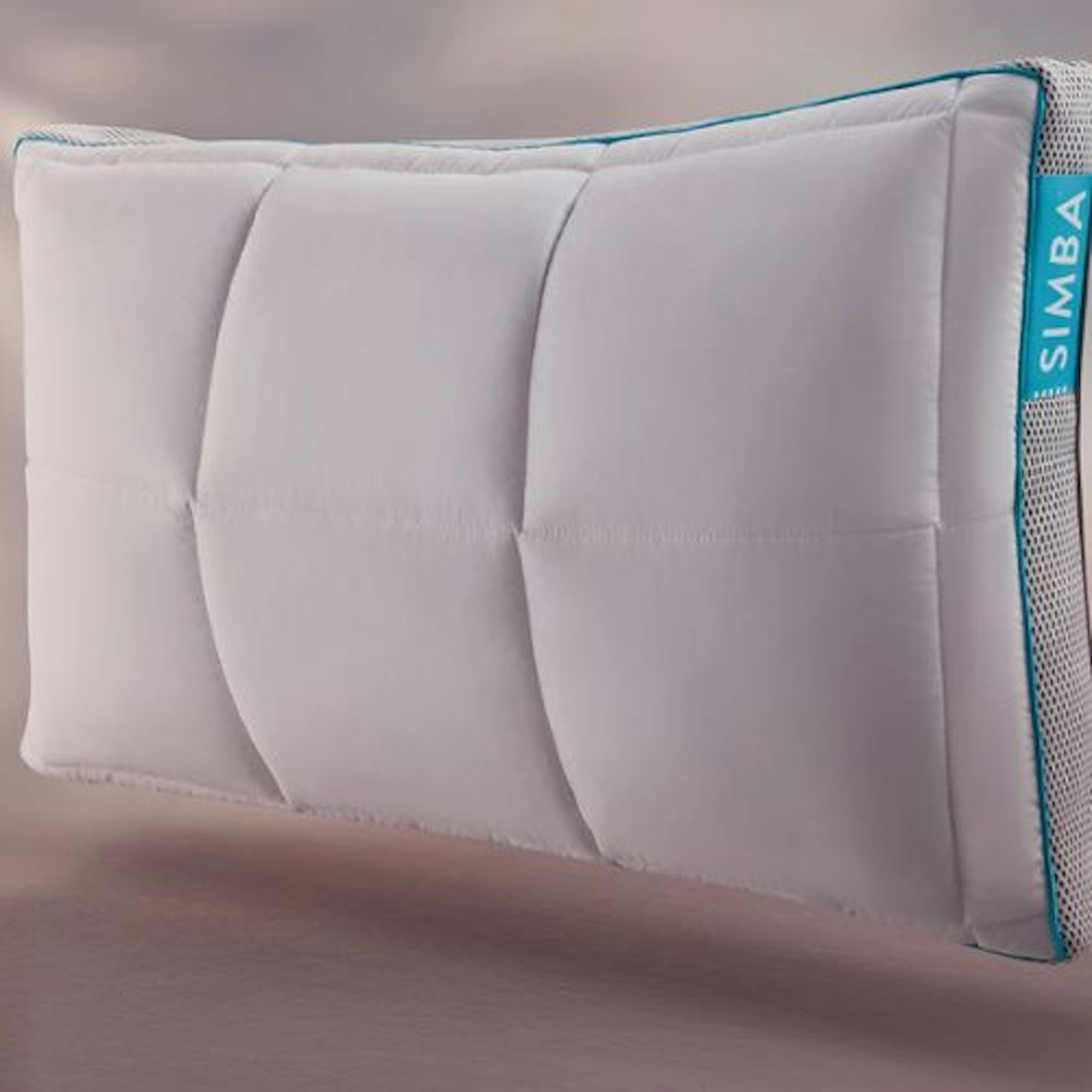
simbasleep.com
Experience the epitome of comfort with the Simba Hybrid Pillow. This innovative pillow seamlessly blends the support of memory foam with the plushness of microfiber, offering the perfect balance for a restful night's sleep. Its responsive design adapts to your sleeping style, providing superior head and neck support. The breathable, temperature-regulating Stratos technology ensures a cool and refreshing sleep. Elevate your sleep experience with this pillow...
Customer Review: "My Simba pillow has turned out to be a pleasant surprise. It stays comfortably cool and provides excellent comfort. Despite my initial scepticism, I'm loving it!"
Pros
- Adjustable, supportive Nanocube inner core
- Recycled cushioning is breathable, anti-allergy
- Stratos temperature control keeps you cool
Cons
- Some customers are unsure about the Stratos temperature regulation
- Best suited to back and side sleepers
| Size | 45 x 70 cm |
| Firmness | Adjustable Firmness |
| Support | Adjustable Support |
| Materials | 100% Better Cotton, with Stratos® Finish Cover, 100% Polyester Fibres Filling, Mesh Border and Inner Cover, 100% CertiPUR (R) Foam + TCPP Free Core Filling |
| Washable | The cover is machine washable at 40°C; Tumble dry on low heat; Ensure the Nanocubes bag is removed prior to washing or drying. |
| Certified | B-Corp |
Best anti-allergy pillow for all sleepers
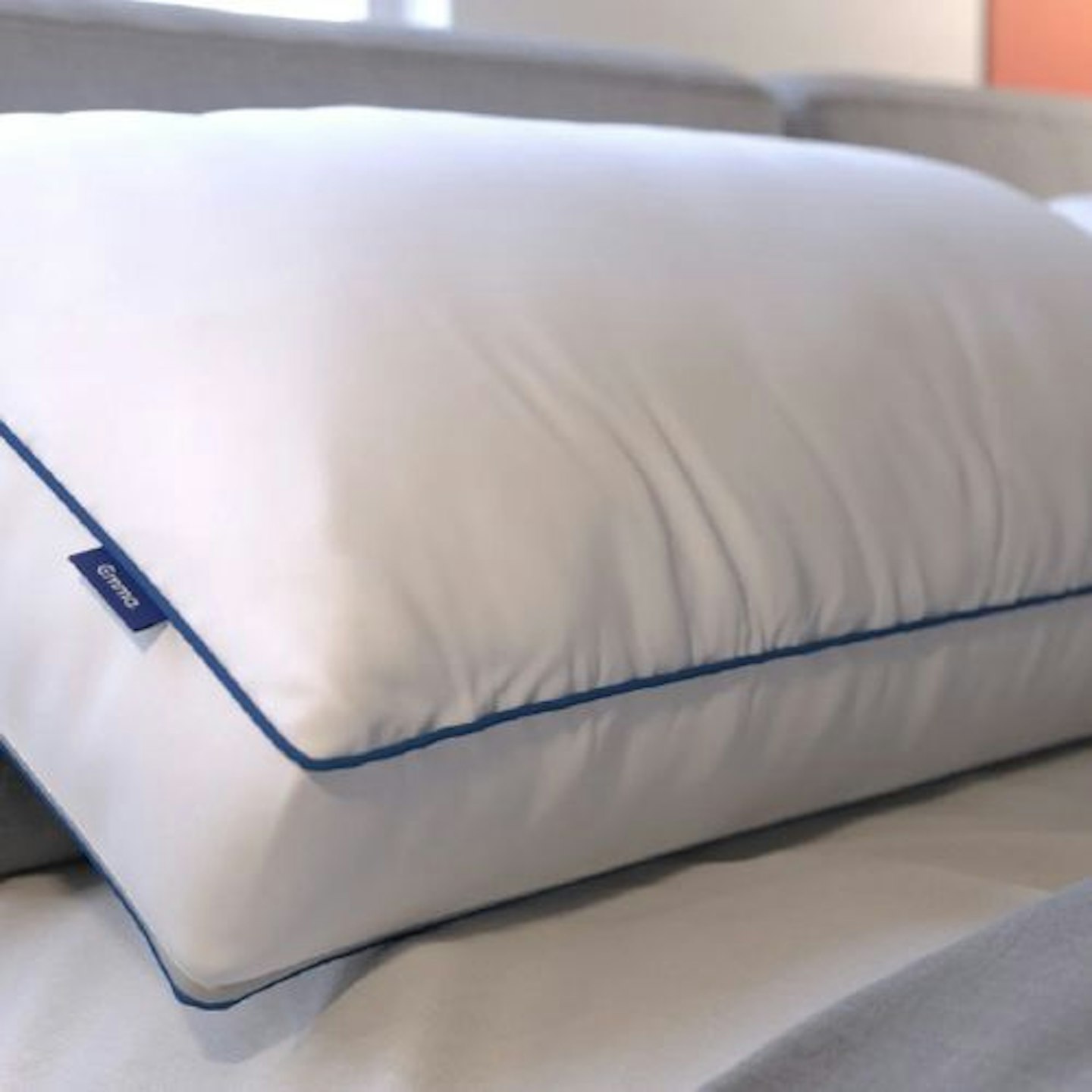
www.emma-sleep.co.uk
Get cloud-like sleep with optimal support and adaptable layers with this Emma Microfibre Pillow. This pillow combines the softness of microfibre with an advanced adjustable design. It's a masterclass in comfort, offering optimal support for your head and neck, ensuring a restful, pain-free sleep. The hypoallergenic filling makes it perfect for allergy sufferers. With a breathable cover, it maintains a fresh, comfortable feel throughout the night. Sweet dreams...
Customer Review: "I absolutely love this pillow! It feels that it's helping me sleep in the correct position. I'm sure it's helped with my previous back ache, I loved it so much that I had to buy another for the odd occasions I ended up on the other side of the best. Not often, but I can't bear the thought of a different pillow!"
Pros
- Fluffier than memory foam
- Adjustable height
- Durable and lightweight
Cons
- This soft pillow may not suit all side sleepers
| Size | 70 x 50 cm |
| Firmness | Soft, Adjustable Loft |
| Support | Adjustable Support |
| Materials | Microfibre 100g/m3 Made of 100% Polyester, Soft Touch Finish; Siliconized Micro Elastic Fibre 100% Polyester Filling |
| Washable | The pillow and all inner pillows are machine washable at up to 60 °C. Tumble dry on low setting. Do not bleach. Do not iron. |
| Certified | OEKO-TEX® Standard 100, Class 1 |
Best anti-allergy pillow for back sleepers
Scientifically proven to protect against both bacteria and allergens such as dust mites, the Silentnight Anti-Allergy Pillow Pair has received the ultimate seal of approval, ideal for allergy and asthma sufferers. For a perfect night's sleep, consider the Silentnight for that sorely-needed back support. Plus, this pair is fully machine washable for long-lasting freshness. Offering fresh comfort night after night, this pillow pair are a great choice for many of us.
Customer Review: "Opted for these as my husband has lots of allergies, lovely soft and fluffy pillows, very comfortable."
Pros
- Medium support for back sleepers
- British Allergy Foundation approved
- Anti-bacterial and machine-washable
Cons
- Will likely not suit front or side sleepers
- Some customers had issues with the filling clumping after a wash
| Size | 69 x 46 cm |
| Firmness | Medium Firmness |
| Support | Back Sleepers |
| Materials | Filled with anti-bacterial, anti-allergy fibres that actively protect against bacteria and dust mites |
| Washable | Can be popped into the washing machine to keep it fresh and clean. |
| Certified | British Allergy Foundation Approved |
Budget-friendly anti-allergy pillow
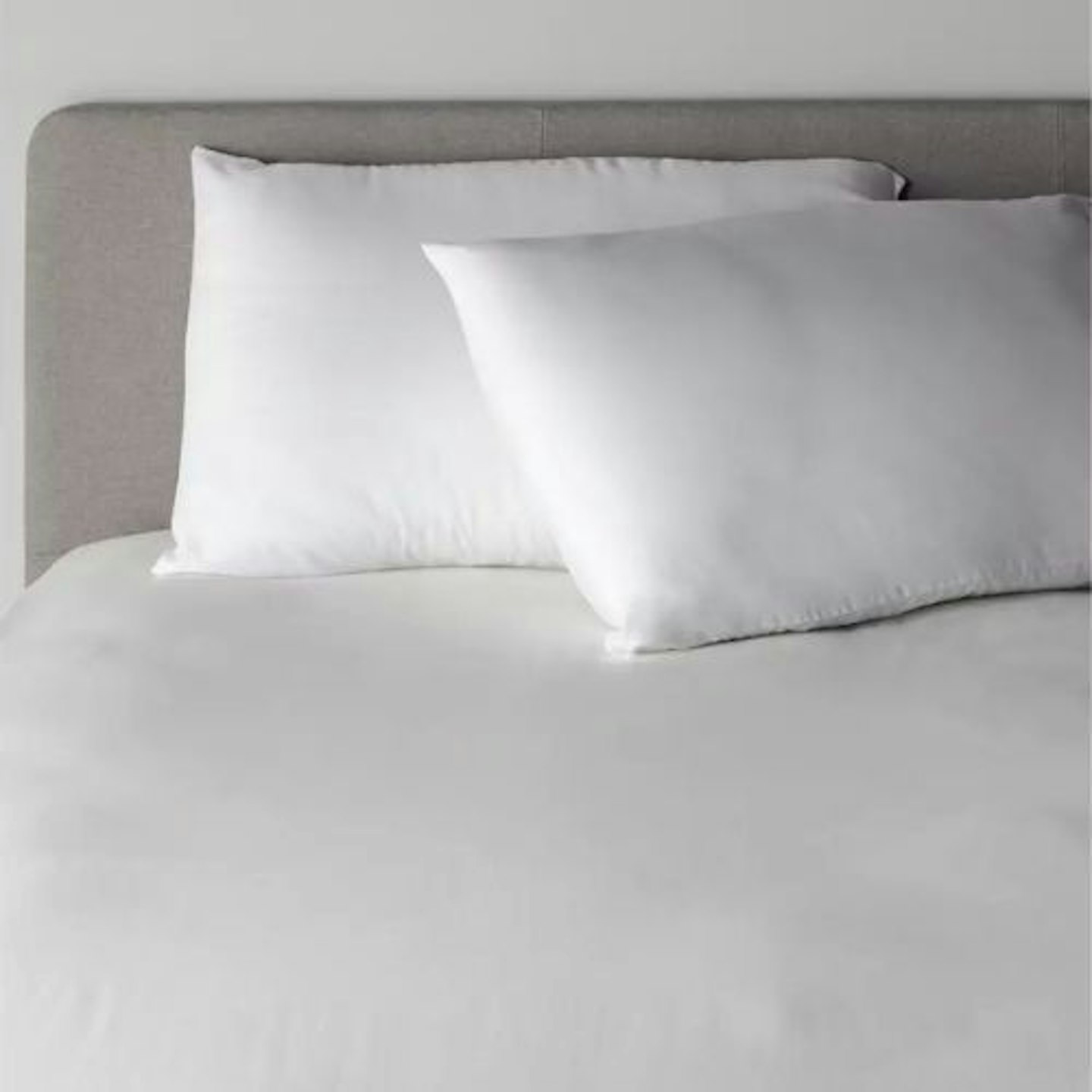
www.argos.co.uk
Rest peacefully with this affordable choice tailored to back sleepers. Packed with 100% recycled polyester fibres, treated to repel dust mites and bacteria, these Anti-Allergy pillows offer medium support. Additionally, these pillows contain a biocide to defend you against bacteria and dust mite allergens, ensuring a clean and healthy sleep environment. Plus, you can easily maintain freshness by machine washing as needed. Enjoy comfort with this pick...
Customer Review: "These pillows are comfortable, not too soft but provide support. A good price for an anti-allergy product. Bought for my son who is very happy with them."
Pros
- Filled with 100% recycled polyester
- Approved by Allergy UK
- Medium support for back sleepers
Cons
- May not support side or front sleepers well
| Size | 74 x 48 cm |
| Firmness | Medium Firmness |
| Support | Back Sleepers |
| Materials | Polyester Cover, Recycled Polyester Filling |
| Washable | Machine washable. |
| Certified | Approved by Allergy UK. |
Best anti-allergy pillow for neck pain
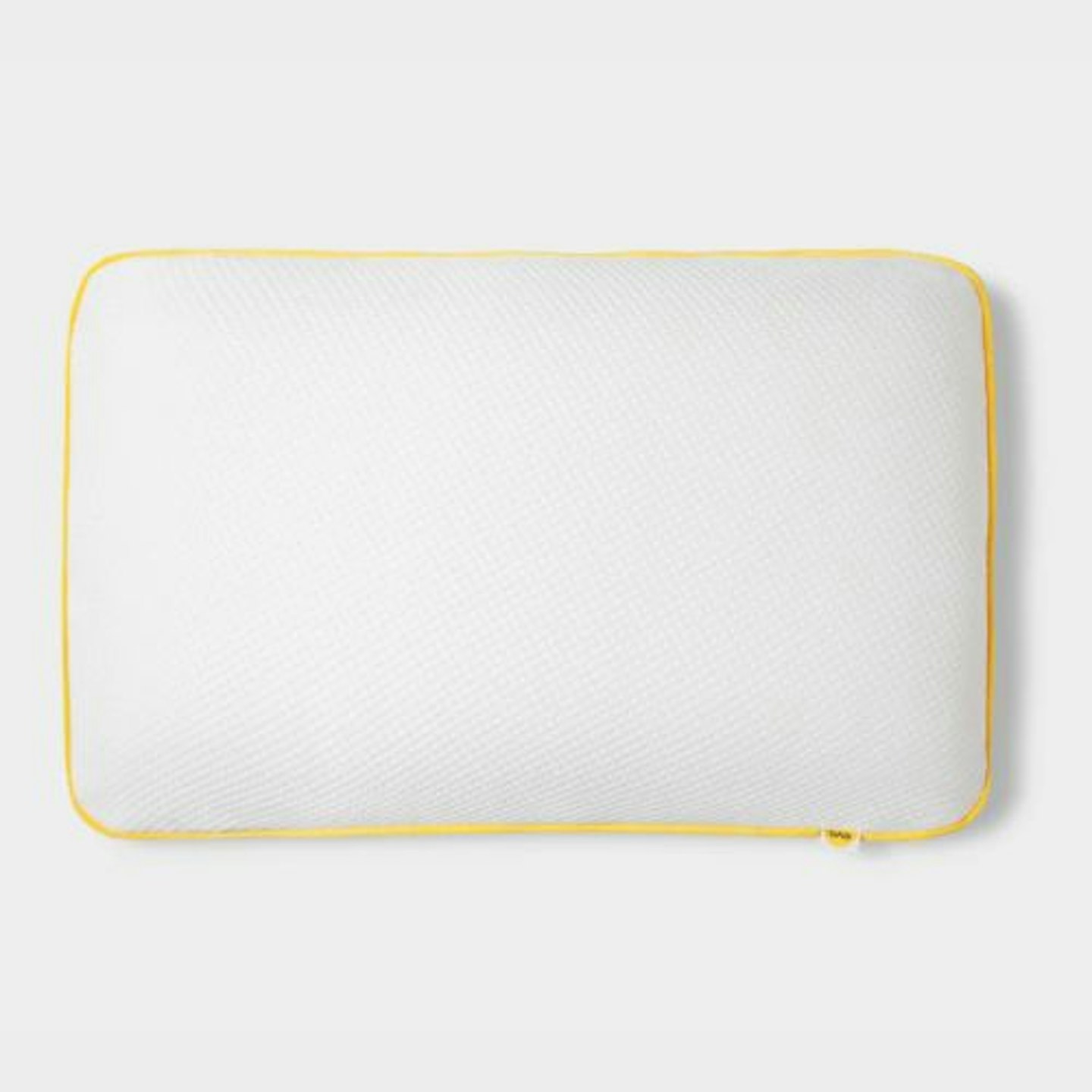
www.evesleep.co.uk
With a removable cover for washing and an antimicrobial shield, eve – the memory foam pillow won’t trigger allergies. Whether you’re a front, side, or back sleeper, this pillow’s for you with an adaptable memory foam that holds your head perfectly, aligning your back and neck in ultimate comfort. How does that sound? More supportive than squishy, the clever cooling air holes mean you're never going to overheat, either. Say goodbye to neck pain.
Pros
- Cooling, anti-microbial and hypoallergenic
- Keeps your spine in the perfect position
- Velvety soft foam is supportive
Cons
- Memory foam is not eco-friendly
- No customer reviews on-site
| Size | 42 x 66 cm; 13 cm Loft |
| Firmness | N/A; Memory Foam |
| Support | Suits every sleeping position, front, back or side |
| Materials | Breathable Polyester Cover, PU Foam Core |
| Washable | The pillow cover is zip-offable and washable at 40°C; Don’t tumble dry, bleach, iron or dry clean. |
| Certified | Unspecified. |
Best anti-allergy pillow for front sleepers
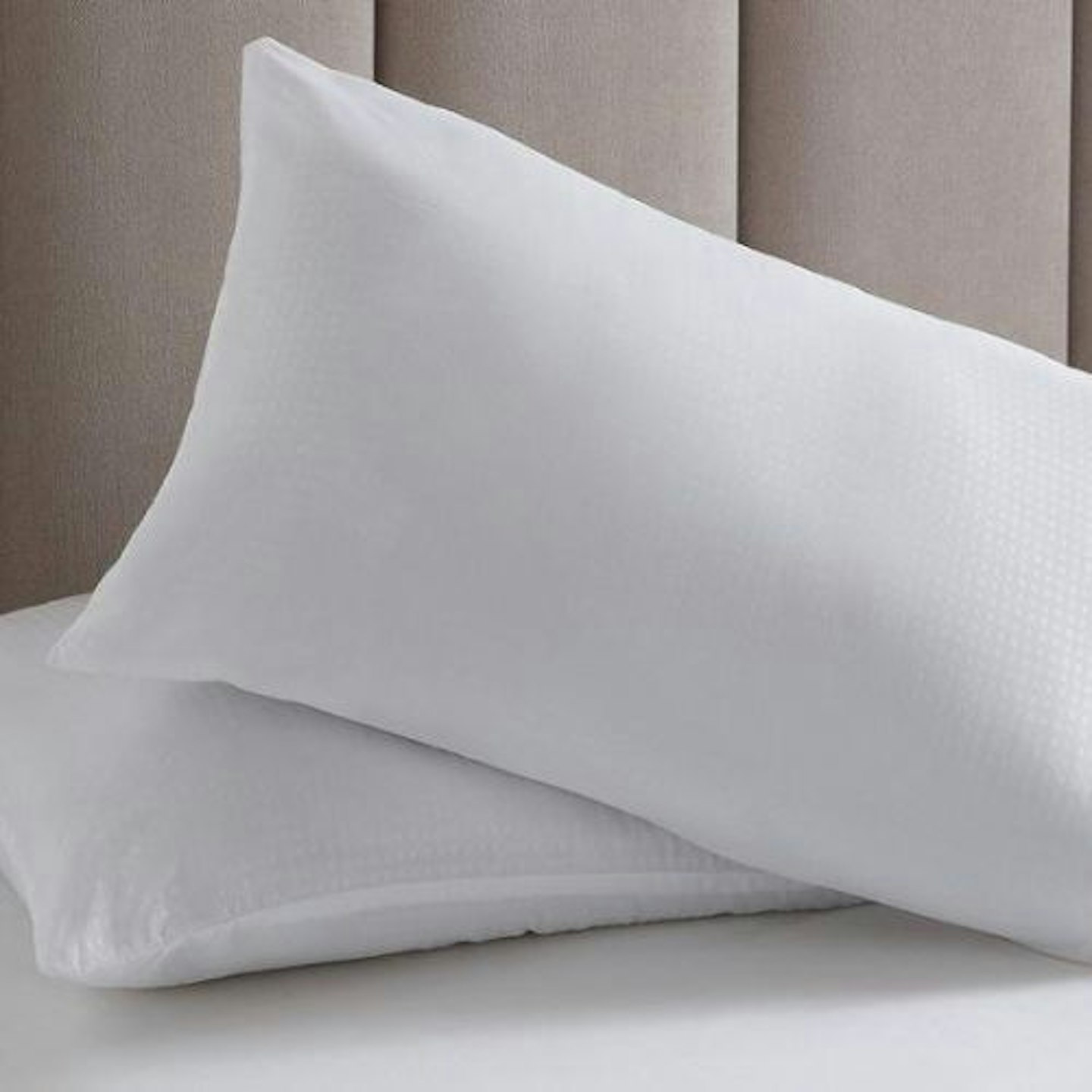
www.dreams.co.uk
Discover comfort tailored to your sleeping style with the Dreams Anti-Allergy Pillow Pair. Whether you prefer front or back sleeping, these pillows are designed for your comfort. They boast a premium anti-allergy filling and an embossed microfibre cover, ensuring every fibre is hypoallergenic for an irritation-free night's sleep. Plus, this budget-friendly pick is conveniently machine washable at 40°C, promoting easy maintenance. Rest peacefully - and sniffle-free...
Customer Review: "Squishable and comfortable. Great pillows. Ideal for me as I lie on my back most of the time & I like to mould the pillow to suit me."
Pros
- Perfect for back and front sleepers
- Sleep well with hypoallergenic fibres
- Easy to wash in the machine at 40 degrees
Cons
- Not ideal for side sleepers
| Size | 74 x 48 cm |
| Firmness | Medium Soft |
| Support | Front or Back Sleepers |
| Materials | Microfibre Cover and Anti-Allergy Polyester Filling |
| Washable | Machine washable at 40°C |
| Certified | Unspecified. |
Best anti-allergy pillow with wool
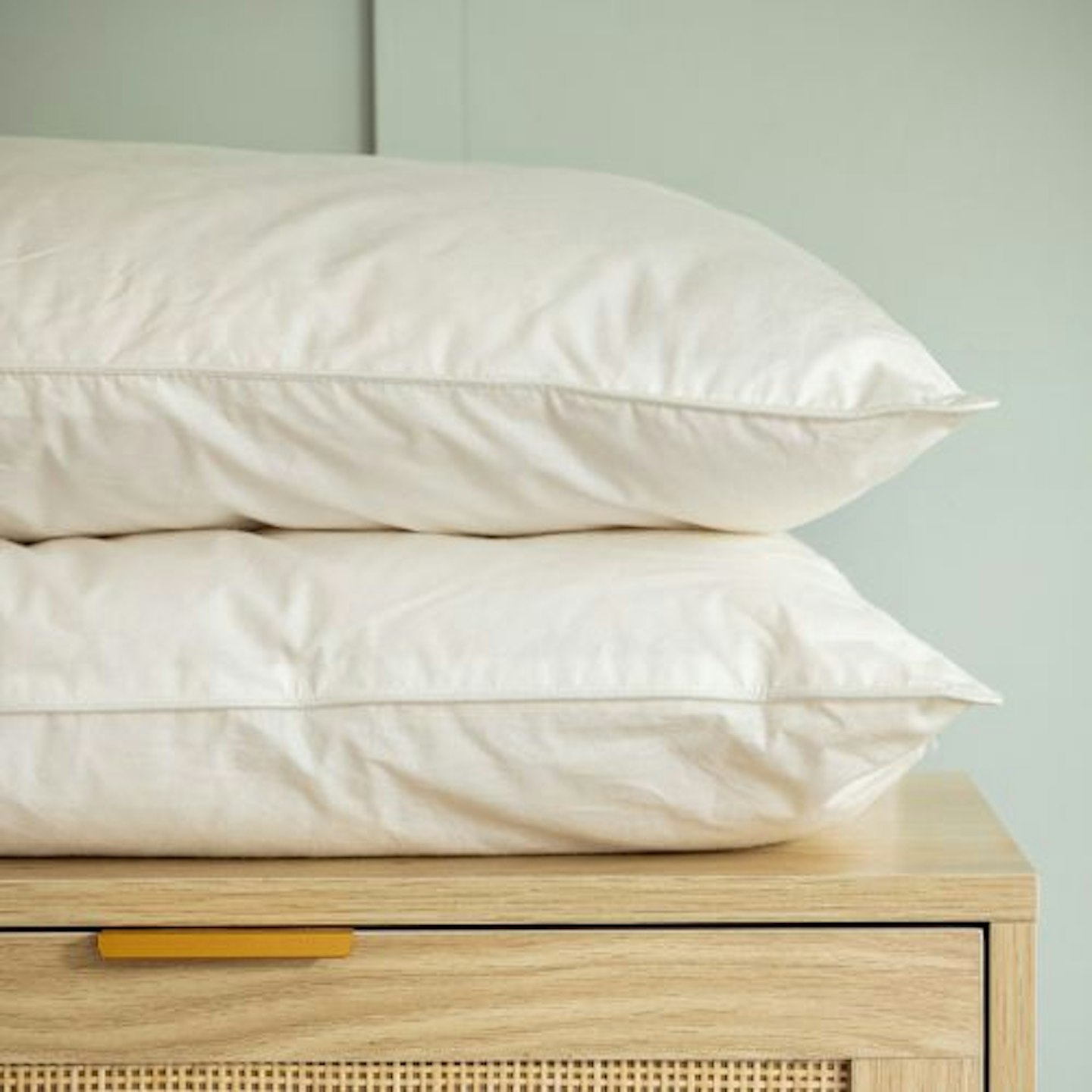
www.soakandsleep.com
Believe it or not, wool is a force to be reckoned with. Breathable, moisture-wicking, hypoallergenic and a temperature regulator, wool can truly transform your sleep. If you are a side or back sleeper, this machine-washable Soak and Sleep New Zealand Wool Pillow could transform your sleep for the better - with its springy, medium-firm support. Wrapped in a pure cotton case for a cool and breathable finish, this pillow is made to last with durable double-stitching.
Customer Review: "I wanted to go ‘feather free’ after discovering the cruelty involved, but knew I needed to buy good quality to get a decent ‘man made’ pillow. I was recommended Soak&Sleep and bought pillows and quilted pillow protectors for the whole family. We all agree they’re the best pillows we’ve ever had. Absolutely delighted with them. Fantastic quality at a great price. Excellent website and delivery too. I highly recommend."
Pros
- Offers support to side and back sleepers
- Comes with temperature regulation
- Breathable and hypoallergenic
Cons
- Wool is not vegan-friendly
- Not for front sleepers
| Size | Unspecified. |
| Firmness | Medium/Firm Support |
| Support | Side or Back Sleepers |
| Materials | 100% New Zealand Mitchell Wool, Pure Cotton Casing |
| Washable | Wash at 30 degrees every 6-12 months, tumble dry on a low heat |
| Certified | Made and Tested to EN Standards |
Highly breathable memory foam
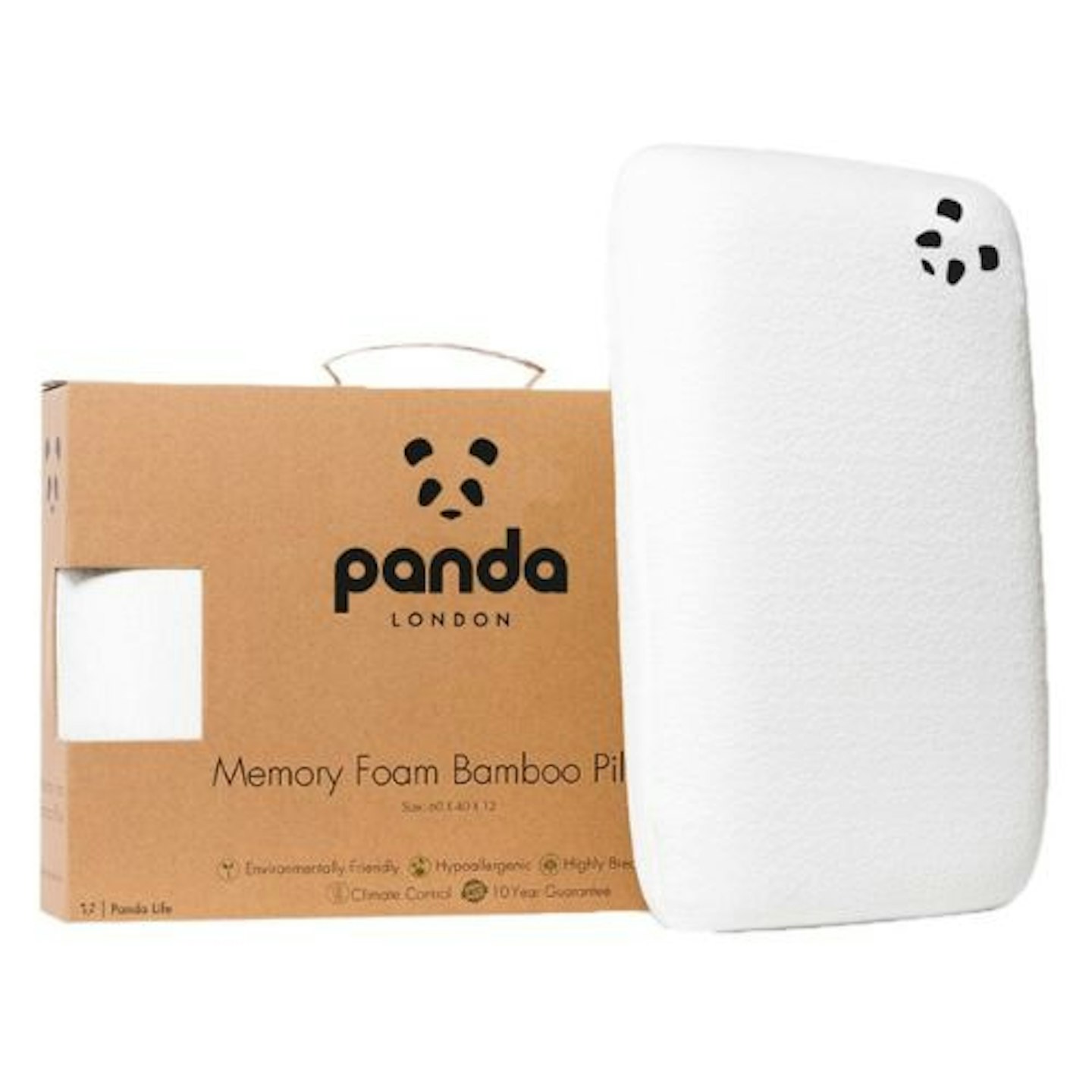
pandalondon.com
With the Panda Memory Foam Bamboo Pillow, watch out for superior support and relaxation. The memory foam layer contours to your head's shape. The removable cover is meticulously crafted from eco-friendly bamboo fabric, soft and luxurious. Bamboo's sustainable growth and breathable properties maintain optimal body temperature, ensuring restful sleep. It's hypoallergenic, dust mite-resistant, and naturally antibacterial, suitable for sensitive skin. Perfect.
Customer Review: "A top quality pillow. Very comfortable and gives support. Highly recommended."
Pros
- Ethically sourced from organic bamboo
- Anti-bacterial and hypoallergenic
- Offers reliable support and comfort
Cons
- May suit back sleepers the best
- The pillow is not machine-washable
| Size | 60 x 40 cm |
| Firmness | Medium Firm, Memory Foam Softens to Body |
| Support | Most Sleepers |
| Materials | Bamboo Fibre and Polyester Case, Jersey Inner Cover, Memory Foam Filling |
| Washable | No - the pillow is not washable. But, the pillowcase is machine washable at 40 degrees - or by hand |
| Certified | Standard 100 by OEKO-TEX® |
Best anti-allergy pillow protectors
Perhaps, consider this Silentnight Anti-Allergy Pillow Protectors Pair. Instead of investing in a new pillow, a pillow protector may do the trick. The anti-bacterial, anti-allergy fibres are approved by the British Allergy Foundation, which means they have the ultimate seal of approval. These protectors are ideal for allergy and asthma sufferers. Designed to protect and prolong the life of your pillow, this pair will ensure comfort, freshness and protection from allergens.
Customer Review: "I recently purchased the entire anti-allergy collection, and it's been great. Not only is it incredibly comfortable, but it also provides a much-needed sense of peace of mind. As someone who suffers from allergies and asthma, I often find myself worrying about dust mites and other allergens. However, since switching to anti-allergy bedding, those concerns have become a thing of the past. These pillow covers are not overly thick, but it helps plump up the pillow which is nice."
Pros
- Filled with anti-bacterial, anti-allergy fibres
- Designed to protect and prolong the life of your pillow
- Ideal for allergy and asthma sufferers
Cons
- Some customers found these smaller than expected
| Size | 72 x 47 cm |
| Material | Microfibre |
| Washable | Machine washable at 40°C, encased in a soft microfibre cover |
| Certified | British Allergy Foundation |
Verdict: Which is the best anti-allergy pillow?
A masterclass in comfort, the versatile Emma Microfibre Pillow is our top hypoallergenic pick.
Buyer's guide
Thanks to Fabio from Dreams, we can answer the question, "What do I need to look for when choosing an anti-allergy pillow?" Fabio points out: “It certainly depends on your specific needs and circumstances when choosing any anti-allergy products.” Here are some thoughts…
Research – before making a purchase, says Fabio, and “check reviews for those who have similar allergies to you and make sure you understand the materials they are made from.”
Remember – that anti-allergy pillows are just “one part of an overall strategy to reduce allergen exposure in your home,” says Fabio. Maintain good interior air quality to lower allergen levels.
Recommendation – can come from a healthcare professional – if you have asthma or severe allergies. Your local GP or pharmacist will point you in the right direction on the best strategies.
Requirements – as mentioned above, will influence your decision. If you sleep on your back, a pillow for side sleepers isn’t going to provide support. Think about how you sleep and choose wisely.
FAQs
Can old pillows cause allergies?
Yes - your old reliable pillow may prolong your sniffles or dry throat. After all, over time, pillows can accumulate dust mites, dead skin cells, pollen, pet hair, and other allergens, which can trigger allergic reactions. So, what can be done? Well, to reduce the risk of allergies from old pillows, consider the following...
Regular cleaning - can help reduce the build-up. For sufferers, we recommend that pillowcases should be washed weekly. However, the pillows themselves should be washed once a year.
Hypoallergenic covers or protectors - are a great option if you can't afford to fork out for a pillow; they create a barrier between your pillow and allergens, reducing your exposure.
Investing in a hypoallergenic pillow - is your best bet. Luckily, we've done the hard work for you.
Vacuuming - your pillows and the surrounding area can help remove dust and allergens.
Sunlight and fresh air - can help kill dust mites and reduce allergen levels - believe it or not.
How do I wash an anti-allergy pillow?
Though synthetic pillows are generally easy to care for, there are a few drawbacks to this variation. Often coming with a short lifespan, the filling can become clumped, as well as damaged after repeated washing – which is not ideal if you need an orthopaedic pillow for supreme support. So, it’s best to stick to washing instructions for your precious new addition.
As for an anti-allergy pillow cover, it is recommended to wash it once a month to remove allergens. When it comes to the pillow itself, washing it twice or three times a year should be sufficient at a lower degree or anti-allergy setting on your washing machine. After all, you want to ensure it keeps its shape and gives you the comfort you need for a decent sleep.
Piper Huxley is a Homes, Garden and Wellness Product Writer for Yours, an all-rounder who will write on anything from décor to wellness. When not scouring the net for the best home bargains, Piper is listening to a musical soundtrack and tending to her houseplants.

